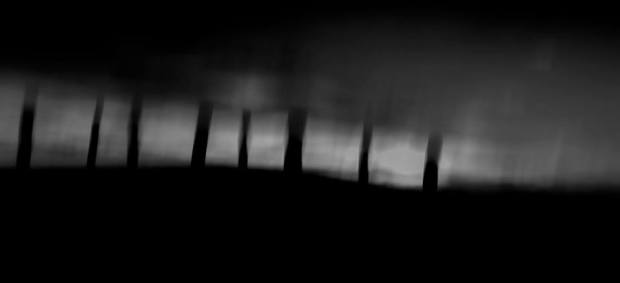I think all of you know what ‘yes’ means. And if you know its meaning, obviously know the meaning of ‘no’. ‘Yes’ is yes, and not ‘no’, and viceversa. So easy to understand, and to use: are you hungry? Yes, mom, I am. You’ve been at the opera? No, I was not at the opera. So simple.
But what if you were in the building of the Opera but actually you did not watch the show. So, you were at the opera? And here raises the context: ‘yes’, for the building, ‘no’ for the show. And the meaning of yes or no loses its substance. I just really don’t know.
just the same thing happens with the ‘nothing’ and ‘something’. There is a thin line between these. There is white, and after that it cames a sharp limit where black starts? Or this limit could be magnified, and it turns to be some thing. A twilight zone. A grey. A territory that nobody wants to see? And how this limit, this transition looks like?
Now imagine a hill. That hill is covered with rapeseed. This hill, form a distance of 10 km looks like a yellow patch delimited clearly from the sky’s blue with a sharp line. Step closer. Is that clear line remains clear? And when you are in the rapeseed field? Right in the middle? How does it look like? Yes, I tell you what: is more green, than yellow. This is the surface of something. Appearance, that we translate instantly in terms, in notions, indicated by words.
Whether it worth to ask what is the situation with the light and shadow? I let you guess…
We people, determined by our notions, words a.s.o, we like to see things as absolute. Nevertheless there is no absolute. Or wait: it exists. Pick an option, pick an answer, and spread it like the absolute, the ultimate truth. And if you preach it well and consequently, and loud enough many times, your truth will be others’ truth as well.
Most of thing works on black and white. But what happens when you take a closer look to the edges? There is always a moment in life, when you really don’t know the ‘yes’ and the ‘no’. Maybe. ‘Maybe’. Yet, another word, which we seems to know well. So, If ‘yes’ is white and ‘no’ is black, maybe is the whole range of gray. And if black and white are only abstractions, greys really exist.
But we may ask ourselves: greys really exist?







